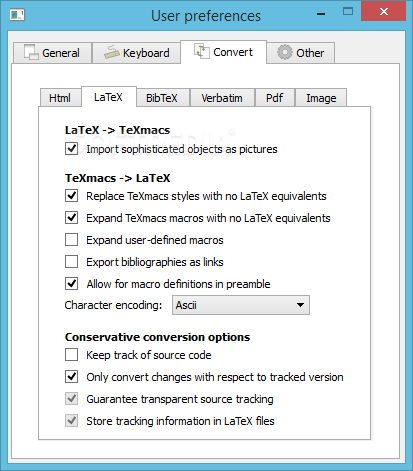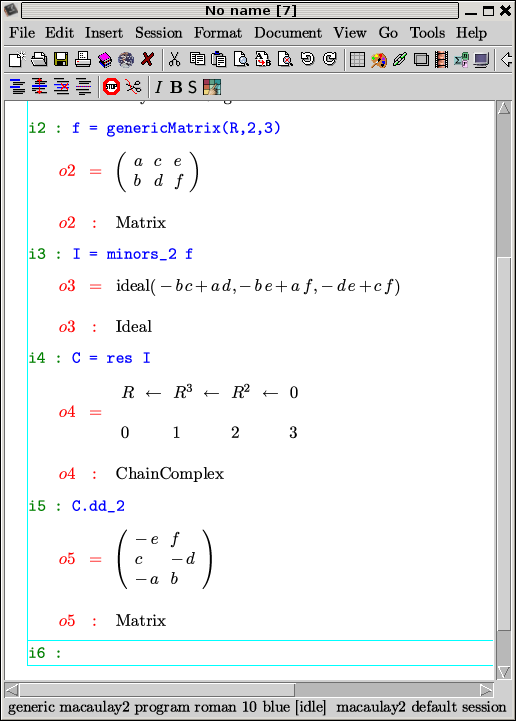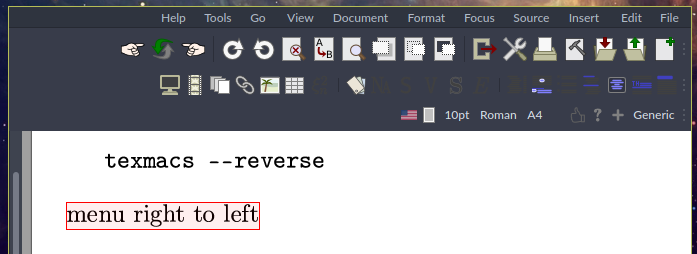

In every single one of my past experiences, LaTeX/beamer has taken longer to work with than Keynote (the reverse is true for longer text dominated documents for LaTeX vis a vis MS Word).Īn ideal solution would involve using beamer in some reduced fashion (I have newcommands etc. I have been looking into orgmode and multimarkdown, but I would rather not learn those unless I am certain that they check all the boxes (and I do not think they help me with drag and drop).
#Screens texmacs full
Typing it up in full on LaTeX has a huge markup overhead (compared to writing an article or a book). A little painful (I used it in a course I previously taught, which was far less math intensive).

The alternative is to typeset separate equation objects and use Keynote's own transitions to create the effect. This course will involve some long derivations of expressions, where "playing striptease with my audience" will not be a bad idea. Problem is - that does not use the full power of beamer as overlays are absent. I have so far been using a combination of Keynote and LaTeXIt to typeset the math. When I last used LyX many years ago, and I did not use it much, I found its LaTeX export to be a mess. Plus, I will not be writing the book in LyX. They have cut and paste, but no drag and drop as far as I can tell. I am not sure if LyX is a good option for me. It may have been the perfect solution for me otherwise.
#Screens texmacs mac
TeXmacs is useless on Mac for this purpose as its drag and drop support, despite patches, is non-existent because they have chosen to go with Qt for obvious reasons. Just too much of typing and clicking overhead involved and my presentations for this class are very likely to be extremely graphics heavy (some self-created using TikZ, and the rest borrowed as above). Any workflow involving saving an image and then using it in an \includegraphics block is a non-starter. My presentations make heavy use of drag and drop of images from various sources (of course with proper attributions). For this purpose, I was hoping to keep as much of the math (and there is going to be a non-trivial amount) in a reusable form as possible. I am writing a textbook that will be based partially on the contents of this course. However, the situation I am in is a little peculiar and I would be glad of some advice: I have used LaTeX beamer for years, and have even contributed some themes to it. > Retina screens and non standard dpis.I am teaching a course in the upcoming semester and am trying to settle on a way to prepare presentations as rapidly as possible. Max seems to say that Qt should be able to manage > I am probably just showcasing my ignorance, but I am concerned about > displaying things at something as low as 72 dpi see this: > vs 144 dpis, because AFAIK there are almost no screens that are still Also not very sure about what is meant by 72 > the retina display so special and whether the fixes will work for > I am soon going to be able to use a 12'5" laptop screen (which is also > On Wed, at 07:49:04PM +0000, Alvaro Tejero Cantero wrote: > On Wed, at 09:09:12PM +0100, Joris van der Hoeven wrote: 2012, at 10:26, Joris van der Hoeven wrote: I've beenĪble to tweak TeXmacs myself to do it.

To provide me bitmpas glyphs rendered at double resolution then I should beĪble to do the rest and put them onscrenn with standard Qt commands. Mac you always work with resolution independent devices and usual resolution isħ2 dpi while retina is 144dpi (more or less). I thought I have answered to your message but I do not find track of it,Īs far as I understand units in the graphics device are logical one. Re: TeXmacs on retina screens texmacs-dev


 0 kommentar(er)
0 kommentar(er)
